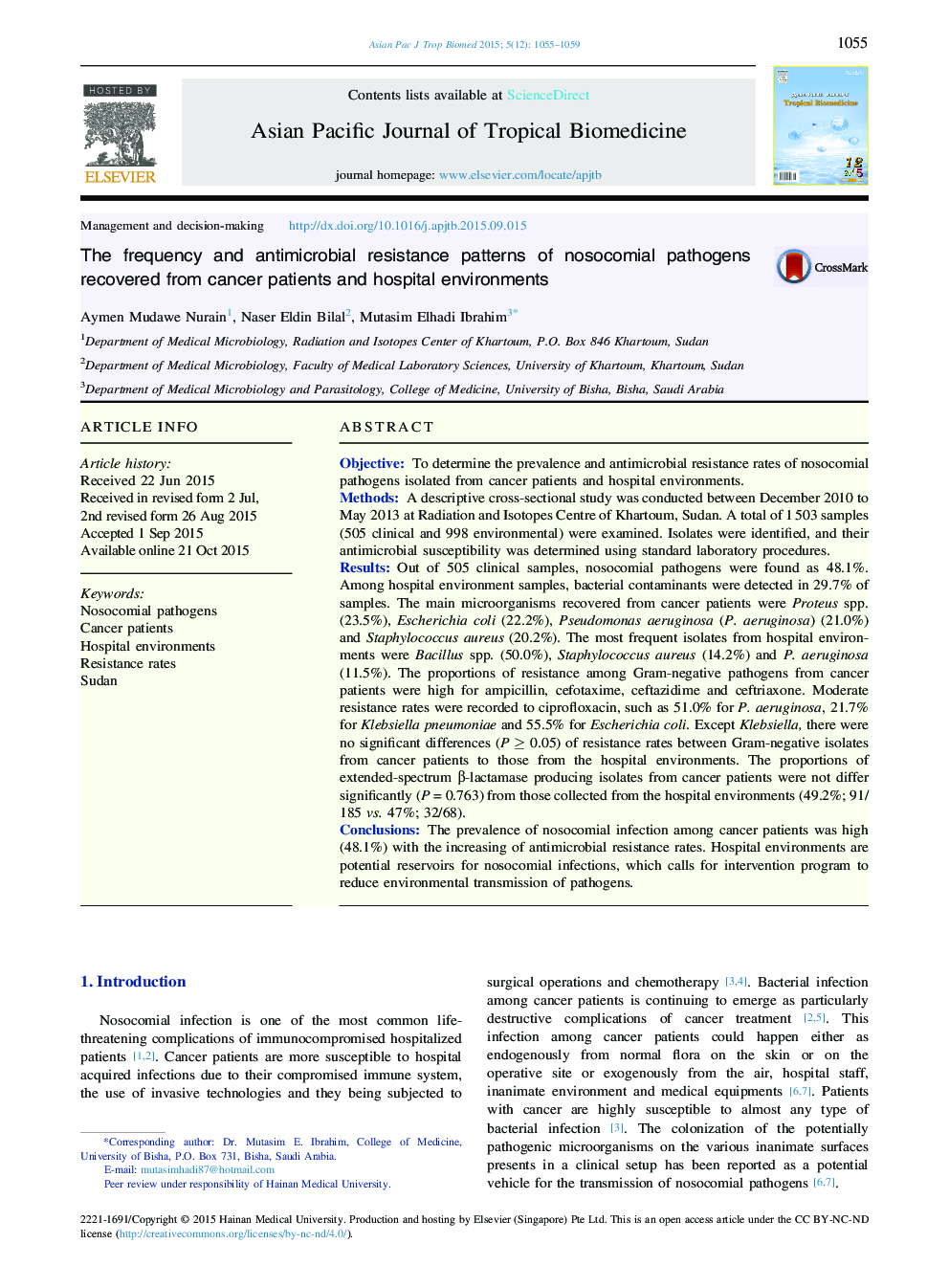| کد مقاله | کد نشریه | سال انتشار | مقاله انگلیسی | نسخه تمام متن |
|---|---|---|---|---|
| 2032434 | 1542870 | 2015 | 5 صفحه PDF | دانلود رایگان |
ObjectiveTo determine the prevalence and antimicrobial resistance rates of nosocomial pathogens isolated from cancer patients and hospital environments.MethodsA descriptive cross-sectional study was conducted between December 2010 to May 2013 at Radiation and Isotopes Centre of Khartoum, Sudan. A total of 1 503 samples (505 clinical and 998 environmental) were examined. Isolates were identified, and their antimicrobial susceptibility was determined using standard laboratory procedures.ResultsOut of 505 clinical samples, nosocomial pathogens were found as 48.1%. Among hospital environment samples, bacterial contaminants were detected in 29.7% of samples. The main microorganisms recovered from cancer patients were Proteus spp. (23.5%), Escherichia coli (22.2%), Pseudomonas aeruginosa (P. aeruginosa) (21.0%) and Staphylococcus aureus (20.2%). The most frequent isolates from hospital environments were Bacillus spp. (50.0%), Staphylococcus aureus (14.2%) and P. aeruginosa (11.5%). The proportions of resistance among Gram-negative pathogens from cancer patients were high for ampicillin, cefotaxime, ceftazidime and ceftriaxone. Moderate resistance rates were recorded to ciprofloxacin, such as 51.0% for P. aeruginosa, 21.7% for Klebsiella pneumoniae and 55.5% for Escherichia coli. Except Klebsiella, there were no significant differences (P ≥ 0.05) of resistance rates between Gram-negative isolates from cancer patients to those from the hospital environments. The proportions of extended-spectrum β-lactamase producing isolates from cancer patients were not differ significantly (P = 0.763) from those collected from the hospital environments (49.2%; 91/185 vs. 47%; 32/68).ConclusionsThe prevalence of nosocomial infection among cancer patients was high (48.1%) with the increasing of antimicrobial resistance rates. Hospital environments are potential reservoirs for nosocomial infections, which calls for intervention program to reduce environmental transmission of pathogens.
Journal: Asian Pacific Journal of Tropical Biomedicine - Volume 5, Issue 12, December 2015, Pages 1055–1059
